Meet Gigantoraptor, The Colossal Dinosaur That Roamed Ancient Mongolia
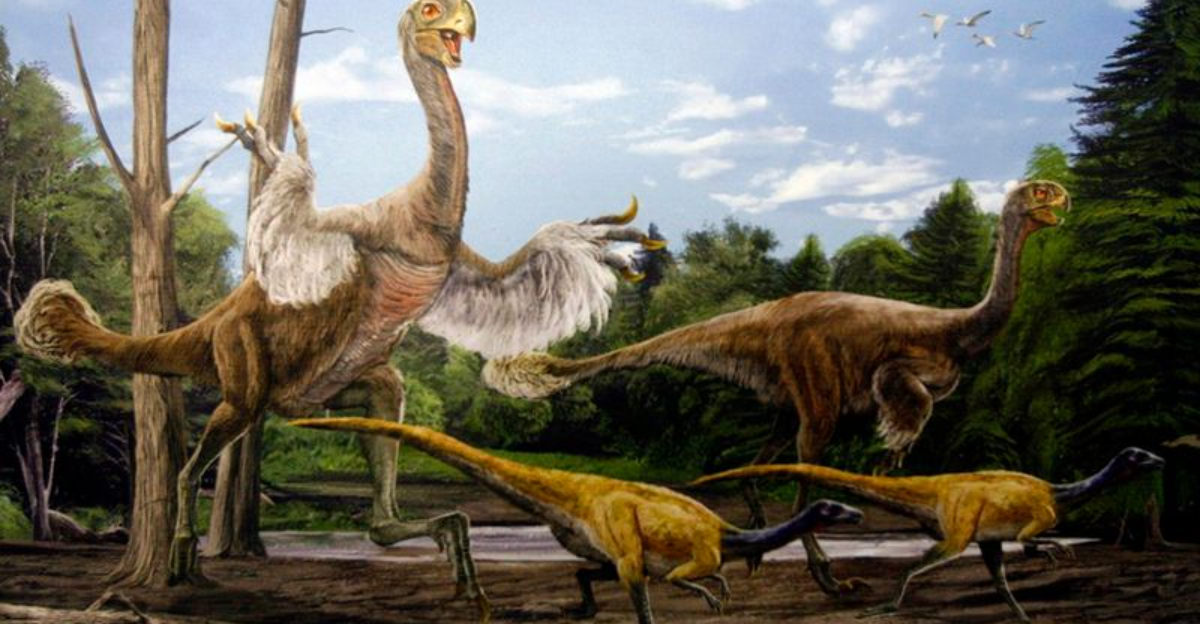
Imagine a creature taller than a giraffe with arms that could reach your second-story window! That’s Gigantoraptor, one of the most fascinating dinosaurs ever discovered.
This massive feathered beast roamed Mongolia during the Late Cretaceous period about 70 million years ago.
Despite being related to small, meat-eating dinosaurs, Gigantoraptor grew to shocking sizes, making it one of paleontology’s most intriguing mysteries.
A Shocking Size That Baffled Scientists
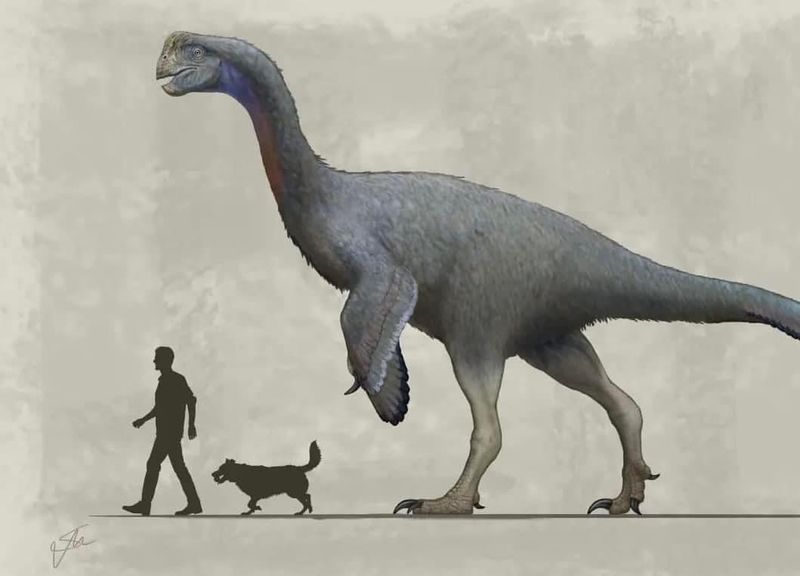
When paleontologists unearthed Gigantoraptor in 2005, they initially thought they’d found a tyrannosaur. The bones were simply too massive to belong to the group they actually represented – the oviraptorosaurs.
Most oviraptorosaurs were turkey-sized creatures weighing less than 100 pounds. Gigantoraptor, however, tipped the scales at roughly 2 tons and stood about 16 feet tall! This shocking size difference would be like finding a rabbit the size of a rhinoceros.
The discovery forced scientists to rethink how these dinosaurs evolved and what factors might have driven such extreme growth in this evolutionary branch.
Feathered Giant Of The Gobi
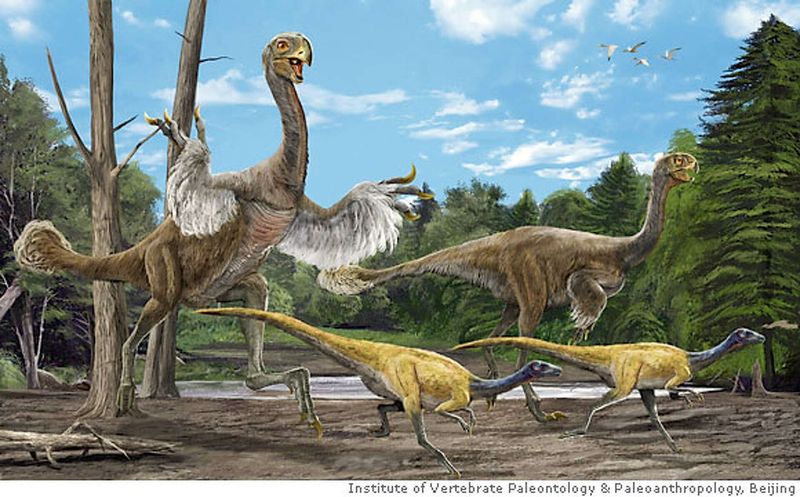
Despite weighing as much as an SUV, Gigantoraptor wasn’t covered in scales like many dinosaurs. Based on its close relatives, scientists believe this giant sported a coat of primitive feathers across much of its body.
Picture a massive ostrich-like creature with colorful plumage strutting across the ancient Mongolian landscape! These feathers weren’t for flying – Gigantoraptor was far too heavy for that. Instead, they likely served for display, temperature regulation, or protecting nests.
The combination of enormous size and feathery covering makes Gigantoraptor one of the strangest-looking creatures to ever walk the Earth.
Lightning-Fast Despite Its Bulk
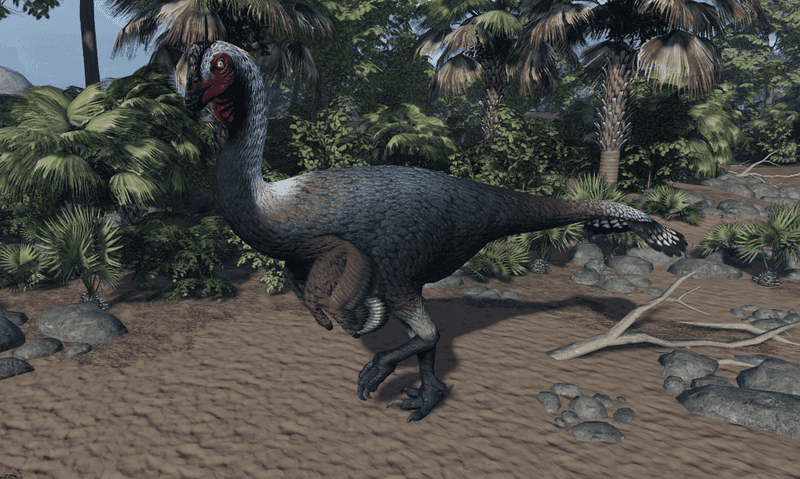
You might think a creature as large as Gigantoraptor would lumber around slowly, but its leg bones tell a different story. The proportions of its lower limbs suggest this giant could move with surprising speed.
Long, slender leg bones and evidence of powerful muscles indicate Gigantoraptor could potentially outrun many of its contemporaries. Scientists estimate it might have reached speeds of 20-25 mph – faster than an Olympic sprinter!
This unexpected agility likely gave Gigantoraptor advantages in either hunting or escaping larger predators that shared its environment.
Mystery Diet: Predator Or Plant-Eater?
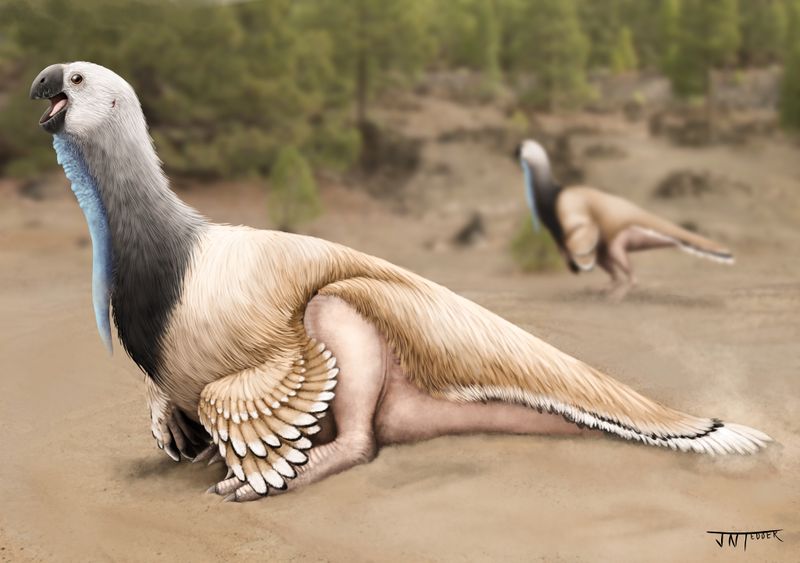
One of Gigantoraptor’s biggest mysteries is what it actually ate. Its closest relatives were omnivores with small beaks perfect for cracking nuts, eating fruits, and occasionally munching small animals.
Gigantoraptor had a similar beak but scaled up enormously. Some paleontologists think it might have used its powerful arms and large claws to pull down branches of prehistoric trees. Others suggest it could have been an efficient predator, using its speed to chase down smaller dinosaurs.
The truth might be that Gigantoraptor ate almost anything it could – plants, eggs, small animals, and maybe even carrion!
Arms Like Tree Trunks
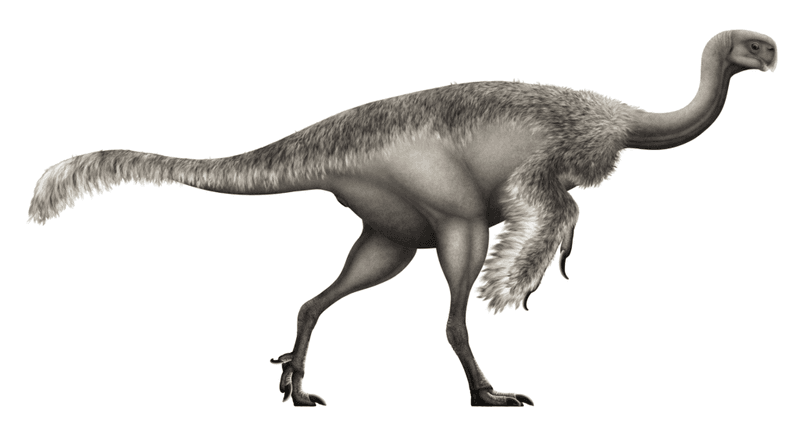
Unlike the famously tiny arms of T. rex, Gigantoraptor possessed forelimbs that were both massive and surprisingly dexterous. These powerful arms stretched nearly 10 feet long and ended in three fingers with curved claws.
What’s particularly weird is how these arms seem overbuilt for most practical purposes. They were incredibly muscular, suggesting they played a crucial role in the dinosaur’s lifestyle. Scientists have proposed they might have been used for defense, gathering food, or even in elaborate mating displays.
These impressive limbs remain one of the most distinctive features of this unusual dinosaur.
Nesting Behavior: Gentle Giant Parent
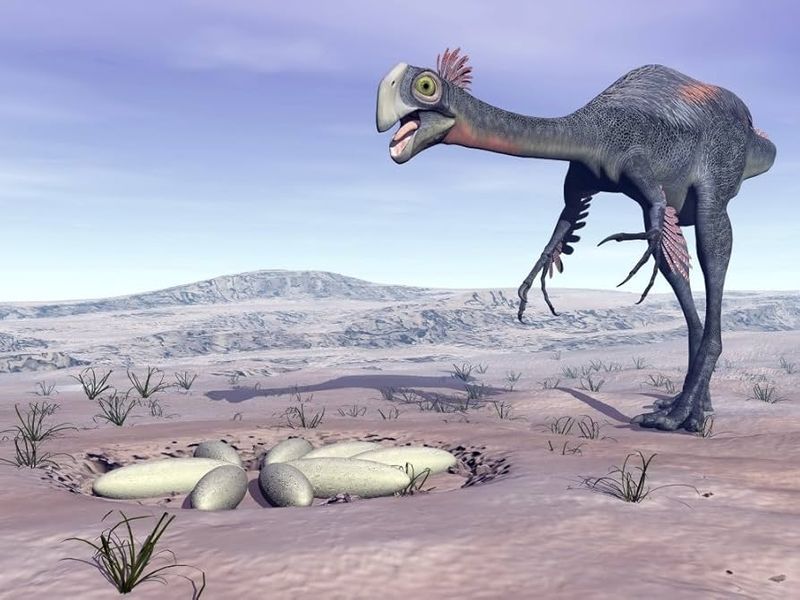
Though we haven’t found Gigantoraptor nests directly, its close relatives were famous for their parenting skills. Smaller oviraptorosaurs have been discovered sitting on nests just like modern birds, suggesting they were attentive parents.
Imagine a bus-sized Gigantoraptor carefully arranging eggs in a circular nest, then settling its massive feathered body over them to keep them warm! The eggs themselves would have been enormous – potentially the size of footballs arranged in rings up to 10 feet across.
This gentle side to such a massive creature provides a fascinating contrast to its intimidating size.
Bizarre Crest And Skull Structure
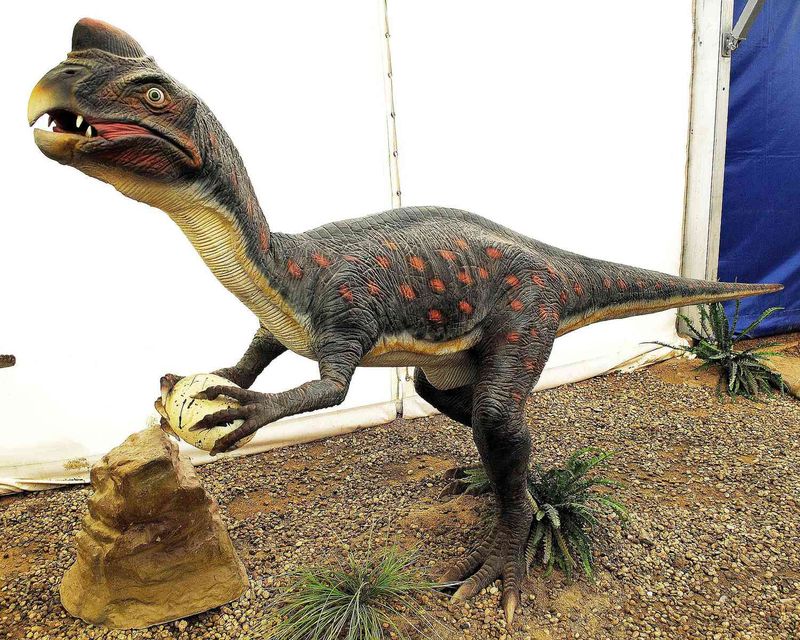
The skull of Gigantoraptor featured a strange toothless beak similar to today’s parrots, but scaled up to nightmarish proportions. Based on related species, it likely also sported a colorful bony crest on top of its head.
This flashy headgear wasn’t just for show – it probably contained hollow chambers that could amplify calls. Gigantoraptor might have produced deep, resonant sounds that carried for miles across the Mongolian plains, helping it communicate with others of its kind.
The combination of beak, crest, and feathers would have made its head look utterly alien compared to the dinosaurs we’re most familiar with.
Sole Member Of Its Genus
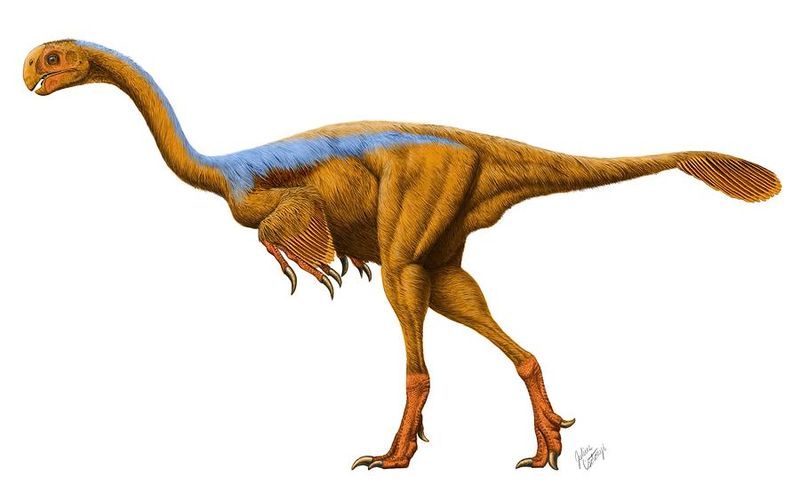
Currently, only one species of Gigantoraptor has been discovered – Gigantoraptor erlianensis – named after the Erlian Basin in Inner Mongolia where it was found. This makes it scientifically precious.
The fossil record for this dinosaur remains frustratingly incomplete. Scientists have recovered only about 15% of its skeleton, leaving much about its appearance and behavior to educated guesswork based on related species.
Every new oviraptorosaur discovery helps fill in the gaps of our understanding, but Gigantoraptor stands alone as the supersized oddball of its family tree, with no close matches yet discovered.
Lived Alongside Fearsome Predators
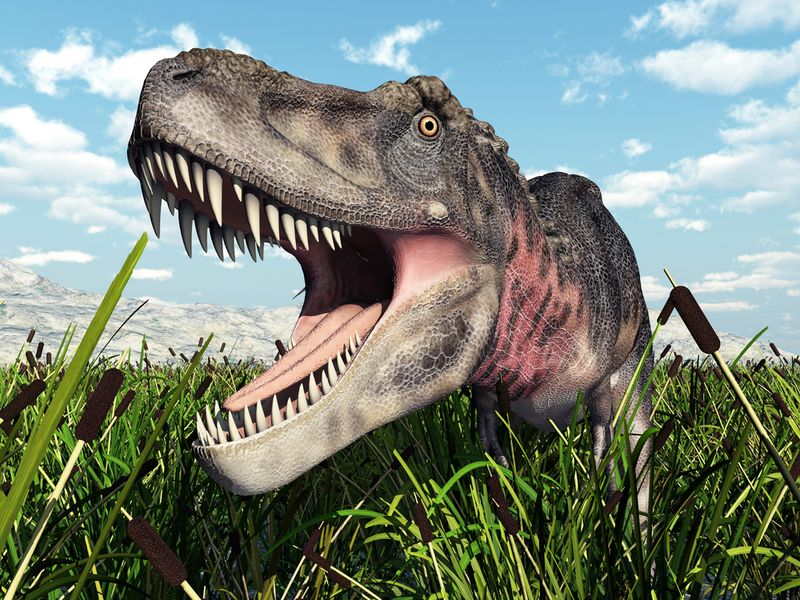
The world of Gigantoraptor was no peaceful paradise. It shared its Mongolian home with some truly terrifying neighbors, including Tarbosaurus – the Asian cousin of T. rex that grew up to 40 feet long.
Other threats included pack-hunting dromaeosaurs (relatives of Velociraptor) that hunted in coordinated groups, and various other predators looking for their next meal. Even at its massive size, Gigantoraptor had to remain vigilant.
This dangerous ecosystem might explain why Gigantoraptor evolved to be so large and retained its speed – when surrounded by deadly hunters, being big and fast is a winning combination!
Discovered By Accident During Filming
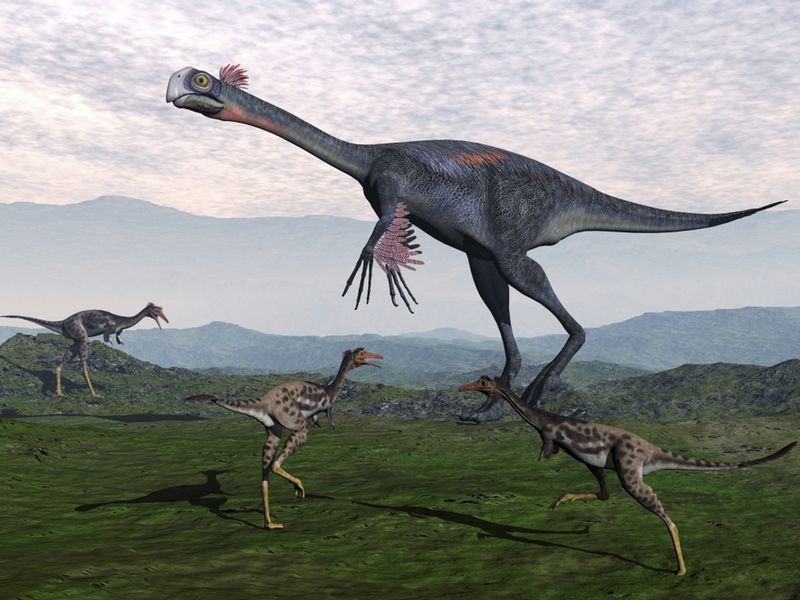
The story of Gigantoraptor’s discovery reads like a movie script. In 2005, paleontologist Xu Xing was filming a documentary in Inner Mongolia when a cameraman accidentally kicked what turned out to be a massive fossilized thigh bone.
This chance encounter led to one of the most important dinosaur discoveries of the 21st century. The team quickly realized they’d found something extraordinary – a creature that broke all the rules for what they thought was possible in oviraptorosaur evolution.
Without that lucky misstep, we might still be unaware of this incredible animal’s existence!
The Extinction Mystery
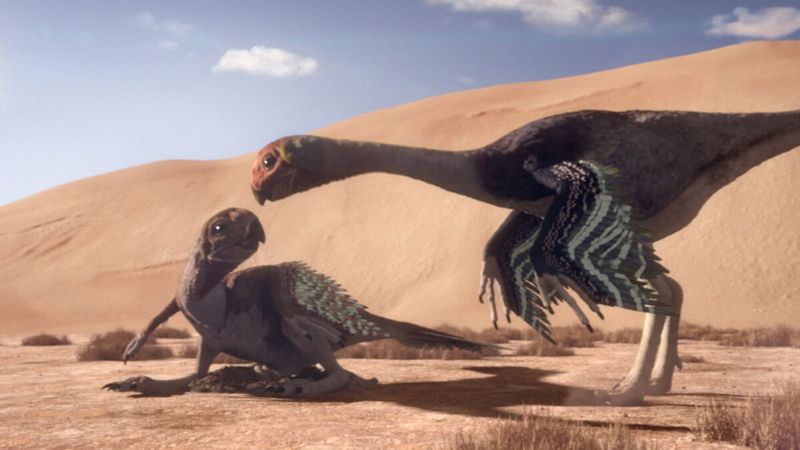
Gigantoraptor vanished forever about 66 million years ago, along with all non-avian dinosaurs. But the questions surrounding its evolution and extinction are particularly puzzling.
Why did this branch of dinosaurs suddenly produce such a giant when most were staying small? Was Gigantoraptor’s unusual size an evolutionary experiment that might have continued if dinosaurs hadn’t gone extinct? We may never know.
What’s clear is that Gigantoraptor represents an evolutionary path cut short – a fascinating “what if” in Earth’s history that reminds us how unpredictable evolution can be.






